The winter transfer window poses a difficult challenge for footballing clubs across Europe when comparing it to its summer counterpart.
Often seen as a slower window due to its shorter length and positioning mid-season, clubs will look to find players of value, especially with financial fair play rules looming overhead.
Whilst large amounts of cash are often reserved for their summer transfer business, the January window provides a perfect opportunity for teams to assess the needs of the squad and make worthy additions to their domestic and European campaigns.
Winter transfers can make all the difference, being the catalyst for a late UEFA Champions League qualification push or even escaping the threat of relegation for those at the foot of the table.
For La Liga this season we have observed an array of transfer activity, particularly highlighting the movement of younger stars to and from the top flight of Spanish football.
The following scout report and analysis will begin to highlight how these young players may fit in with the tactics of their new clubs, offering them the chance to hit the ground running and provide a breath of fresh air.
This tactical analysis will address a few notable additions and departures we have witnessed on the build-up to the February 1st deadline, including Granada’s revolving door in attack and Diego Simeone’s future-proofing midfield acquisition.
Bryan Zaragoza Scouting Report
After a formidable start to the season with Granada and asserting himself as their talismanic presence within the final third, Bryan Zaragoza was undoubtedly on the radar of the European elite.
After signing with Bayern Munich in December for a reported €15 million, the plan was that the 22 y/o Zaragoza would continue at Granada until the summer, aiding them in their battle for La Liga survival.
But will we see Zaragoza in the colours of Die Roten earlier than anticipated?
Struck down with injuries to the likes of Kingsley Coman and Serge Gnabry, Bayern are looking to accelerate their signing of the young Spaniard to bolster their current deficiencies in the left-winger department.
This provides a perfect opportunity for Bryan Zaragoza to step right into Thomas Tuchel’s side and provide a significant contribution whilst hot on the heels of Bayer Leverkusen.
So how will the winger look to make an impact and slot into this Bayern system?
Zaragoza has emerged onto the scene in a big way, displaying his technical prowess and explosive movement in the attacking phase.
His 7.09 take-ons and 5.49 progressive carries per 90 are indicative of his desire to utilise his dribbling ability to create goal-scoring actions, having notched six goals already in a struggling Granada side.
His attacking versatility is a match made in heaven for Tuchel, with proficiency in every position across the attacking midfield.
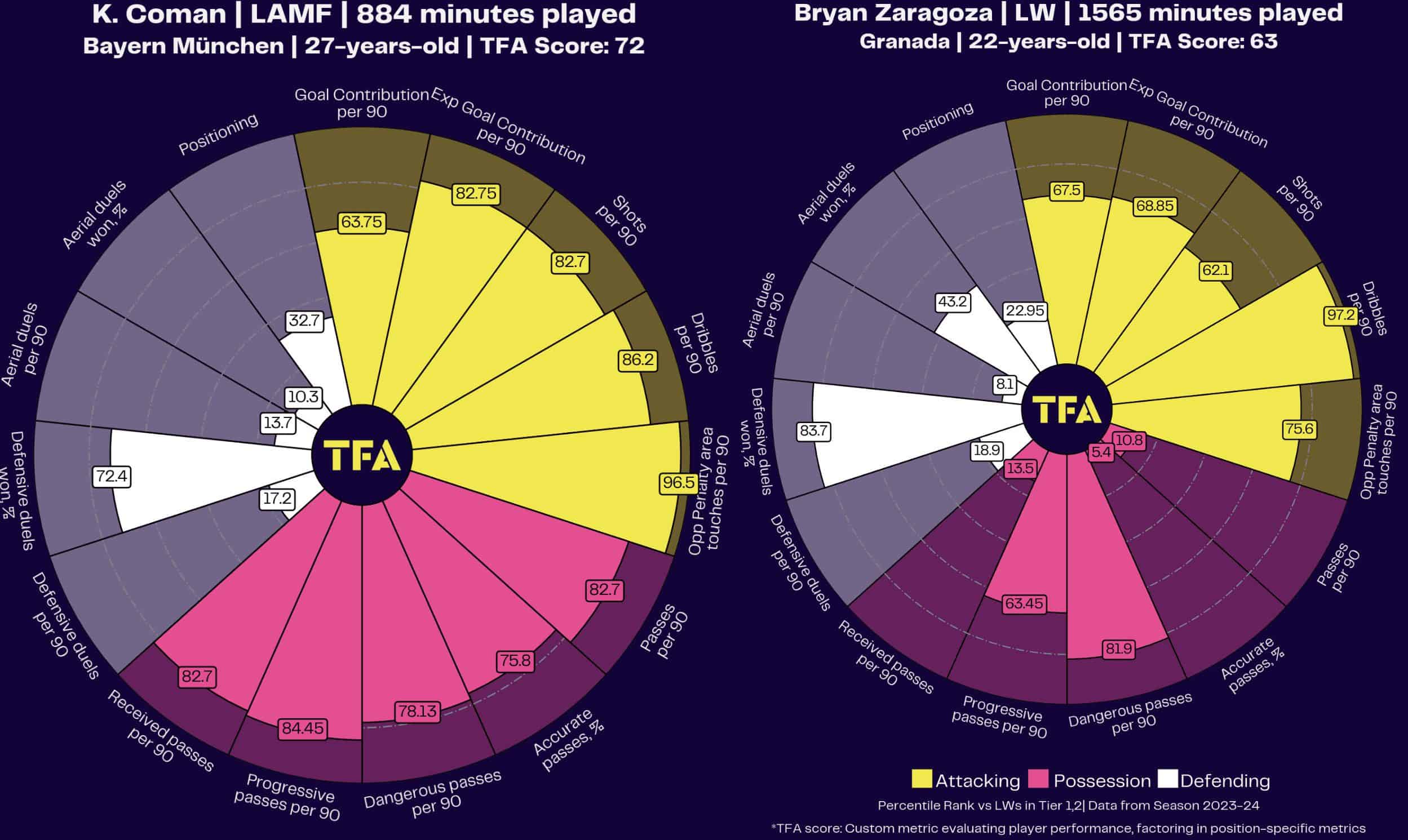
It will be interesting how he adapts to the physicality of the Bundesliga, being relatively small in stature at just 5’5” and raising reasonable concerns regarding his ability to defend in transition when compared to the refined talents in the current side.
The creative elements of his game have often been underwhelming, emphasised by his underperformance in assisted goals (2) compared to his xA of 3.3.
Despite this concern, the elevation in talent and experience around the Spaniard with this move to Bayern will certainly look to enhance his overall play and give him an incredible environment to grow as a player.
The collaboration with elite attacking talents like Harry Kane will surely excite fans and provide a platform to improve his all-round output.
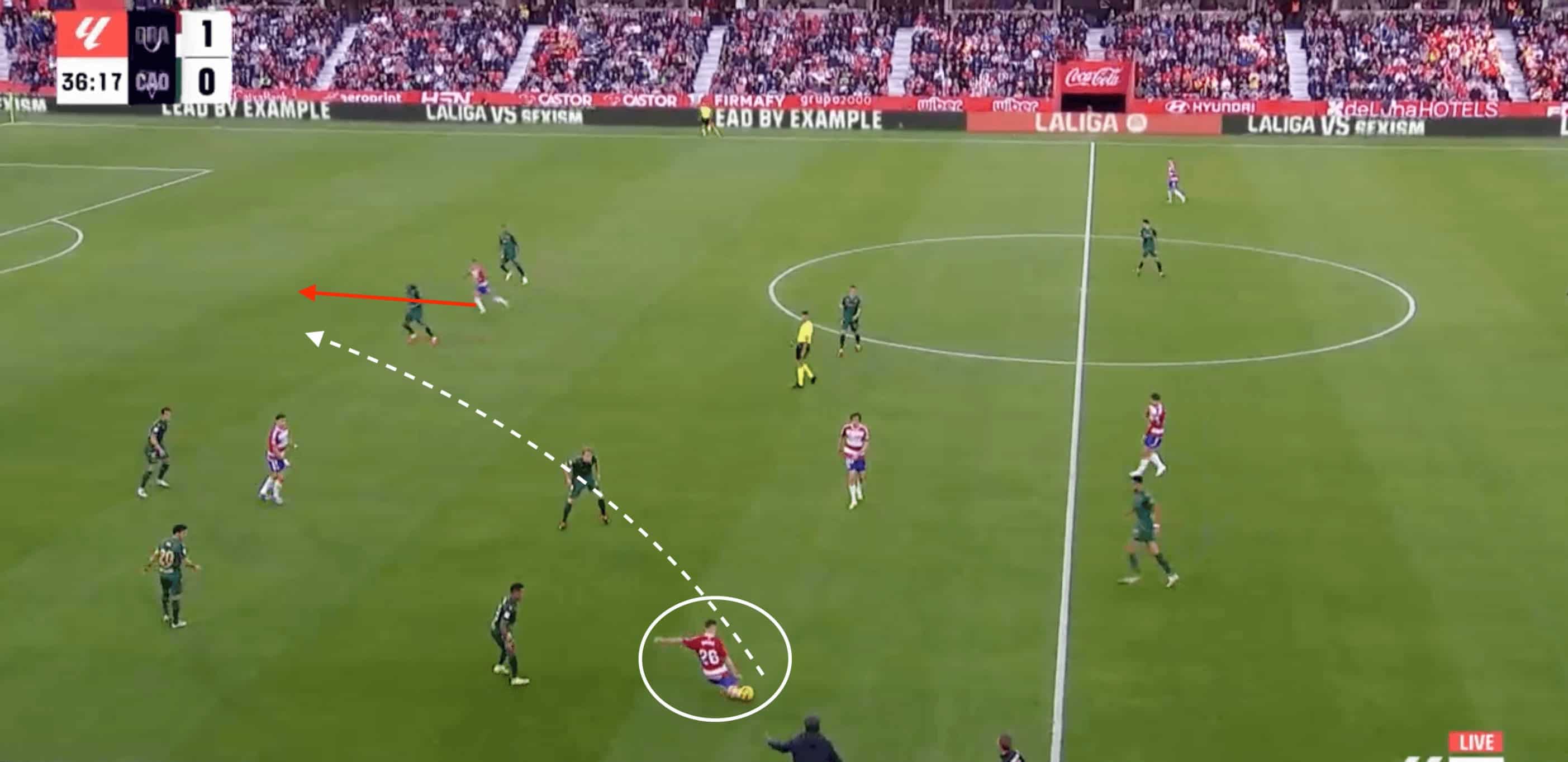
Facundo Pellistri Scouting Report
With the devastating loss of Zaragoza being accelerated at such a crucial point in the season, Granada have had to look elsewhere to fill the attacking void.
Their attention has turned towards youthful Uruguayan winger Facundo Pellistri on a short-term loan deal, aiming to once again show his worth in Spanish football and achieve domestic survival.
The emerging 22-year-old talent has struggled for regular minutes on Eric Ten Hag’s Manchester United side, having to settle for substitute cameo appearances to showcase his attacking spark.
Once regarded as a ‘rascal’ with the ball at his feet, Pellistri displays the same energetic movement and comfortability with the ball as the man he will aim to replace.
This translates to his actions at both ends of the pitch, displaying acceleration and off-the-ball intelligence in the final third, along with working hard to win the ball back should possession be lost to create turnovers.

One feature of his play which has been evidently lacking would be his attacking intelligence in the final third.
Whilst impressing off the bench for Manchester United with his positioning and desire to attack, Pellistri has often found himself making poor decisions in the final phase of play.
The questions surrounding his clinical nature have not been dispelled, having only recorded one assist this season in a visit to Fulham late last year.
With more opportunities and consistent playing time to flourish, Pellistri hopes he can make a real impact in Alexander Medina’s team, slotting nicely onto either flank to become a catalyst for their rise.
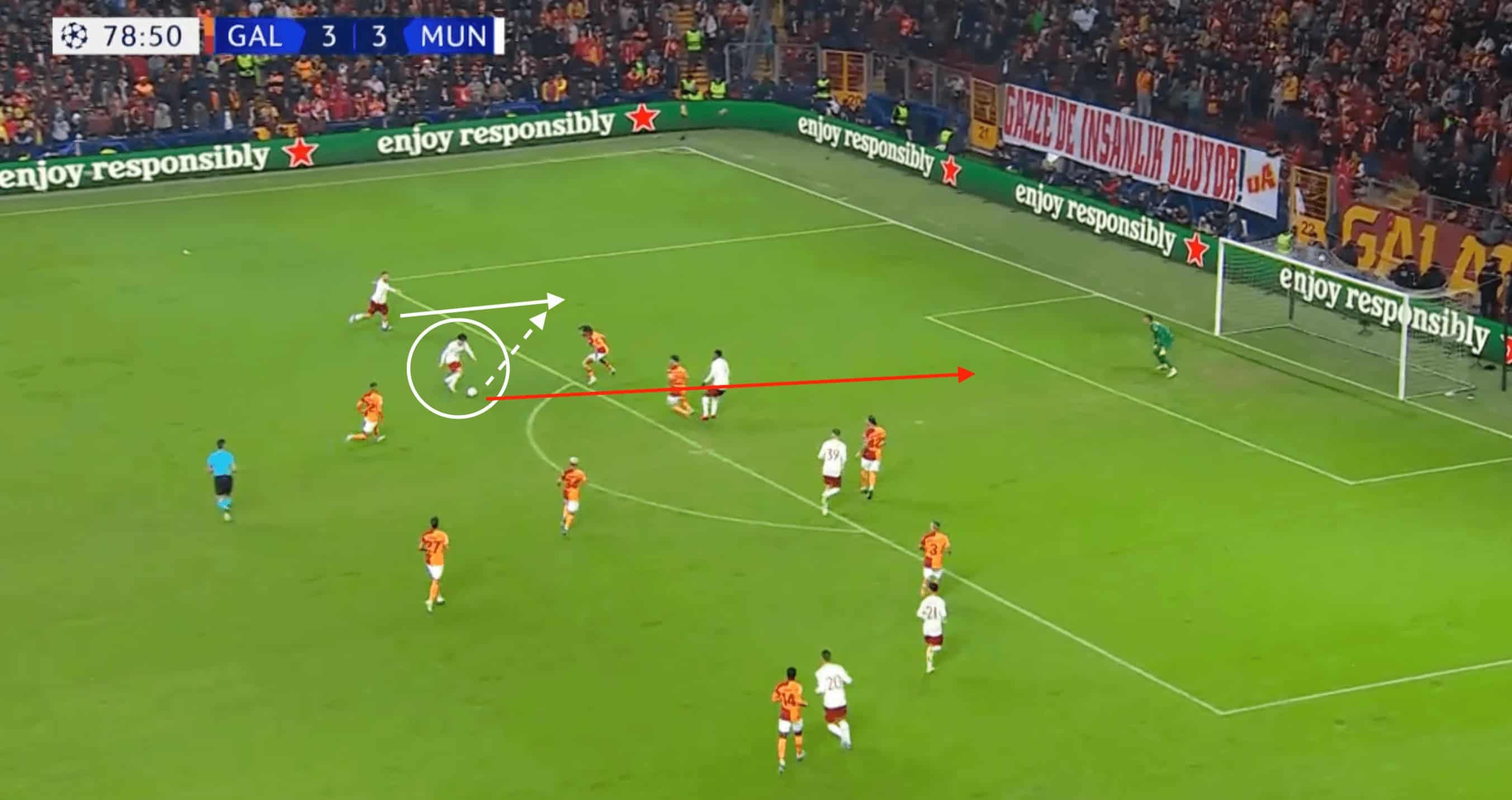
Arthur Vermeeren Scouting Report
A player who will look to make his mark at the opposite end of the table would be 18-year-old Belgian midfielder Arthur Vermeeren.
Having been admired by the Spanish elite for several months, Atletico Madrid finally pulled the trigger to acquire their new talent for a fee of around €23 million.
Diego Simeone’s midfield would appear to be benefitting from new blood attempting to displace the ever-present trio of Koke, Saúl Ñíguez and Rodrigo De Paul.
Having been scouted later last year after a formidable man-of-the-match performance against Barcelona in the Champions League, Vermeeren has grown to become one of the most highly regarded young midfielders on the planet.
At such a young age, he provides such a reassured figure in a variety of roles, adding that creative quality through his line-breaking passes and displaying excellent positional play and spatial awareness.
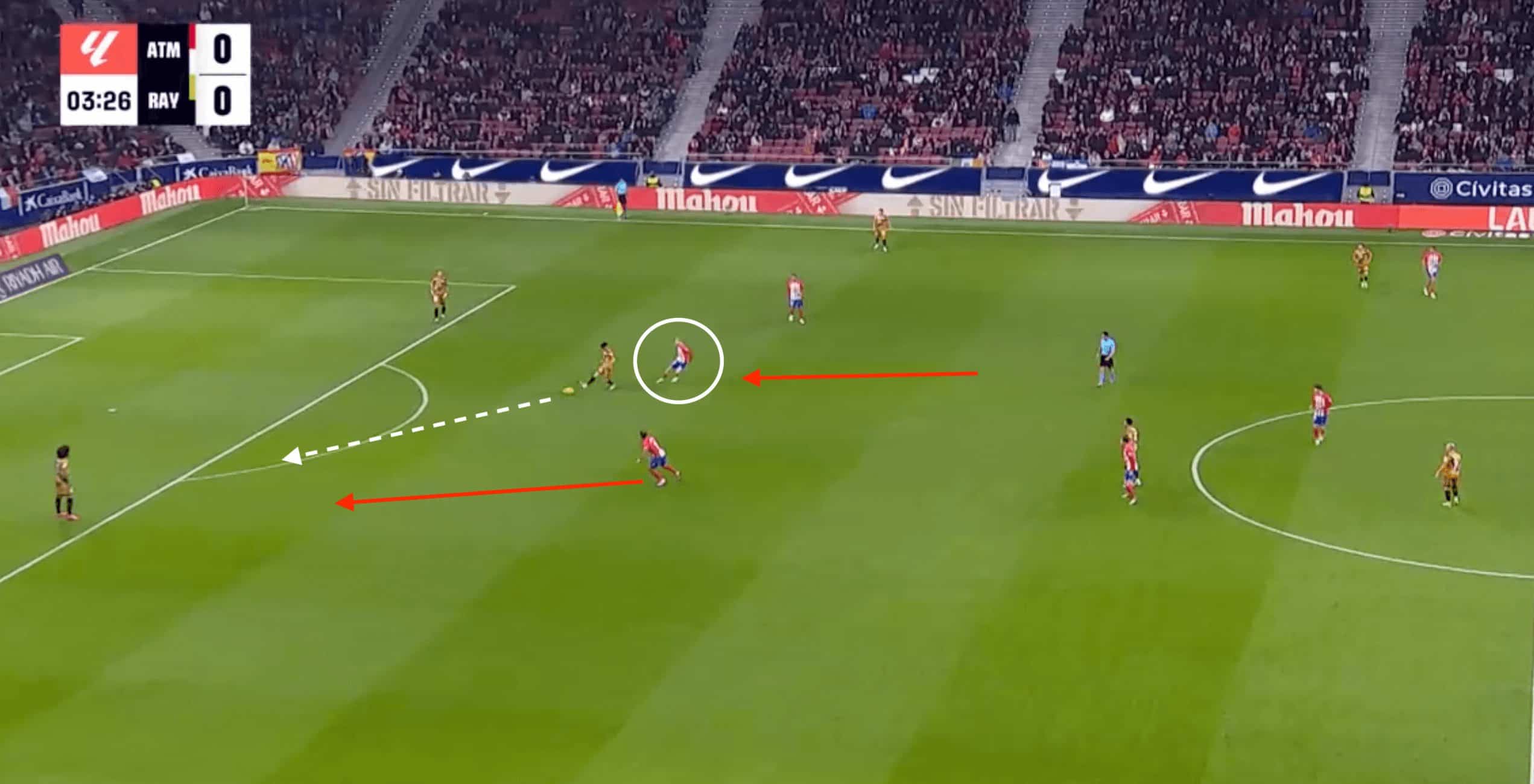
Having caught a glimpse of how he may potentially fit into this Atléti system in the future, it would be sensible to suggest that he could quite easily slot into either the single pivot or inside number 8 role.
In his La Liga debut against Rayo Vallecano, Vermeeren showed glimpses of maturity and an establishing partnership between himself and fellow starlet Pablo Barrios.
The progressive elements of his game were on full display, highlighting his surging runs when the likes of Memphis Depay would drop deeper to collect and distribute the ball.
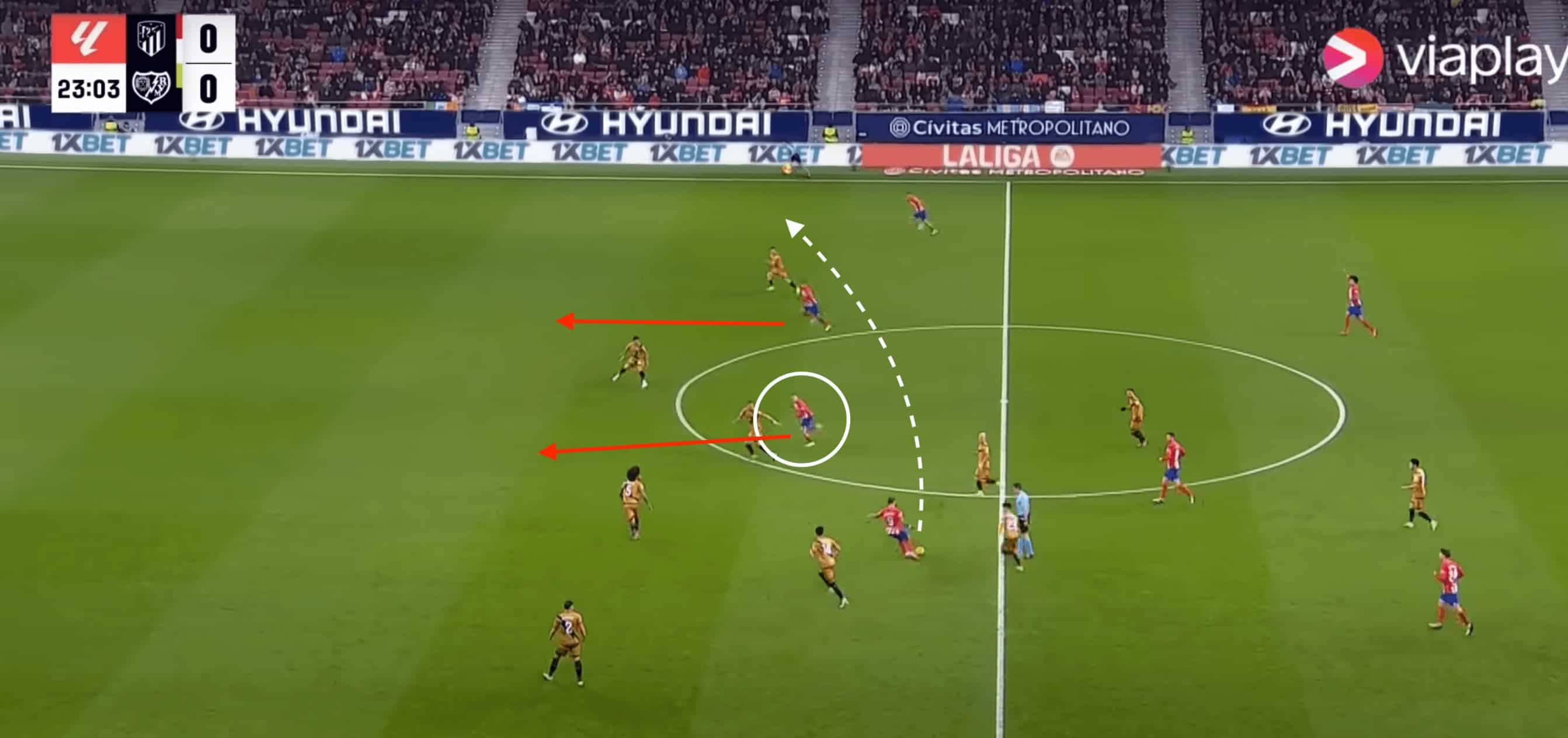
An area in which he would need to elevate would have to be his defensive reactions, especially when having to mark runners when drifting across to the right flank.
With Llorente aggressively pressing the opposition ball carrier, Vermeeren was unable to rotate into the space vacated by the wing-back.
This allowed the opposition forward to receive the ball one step ahead of Vermeeren and find the killer ball for the Vallecano equaliser.
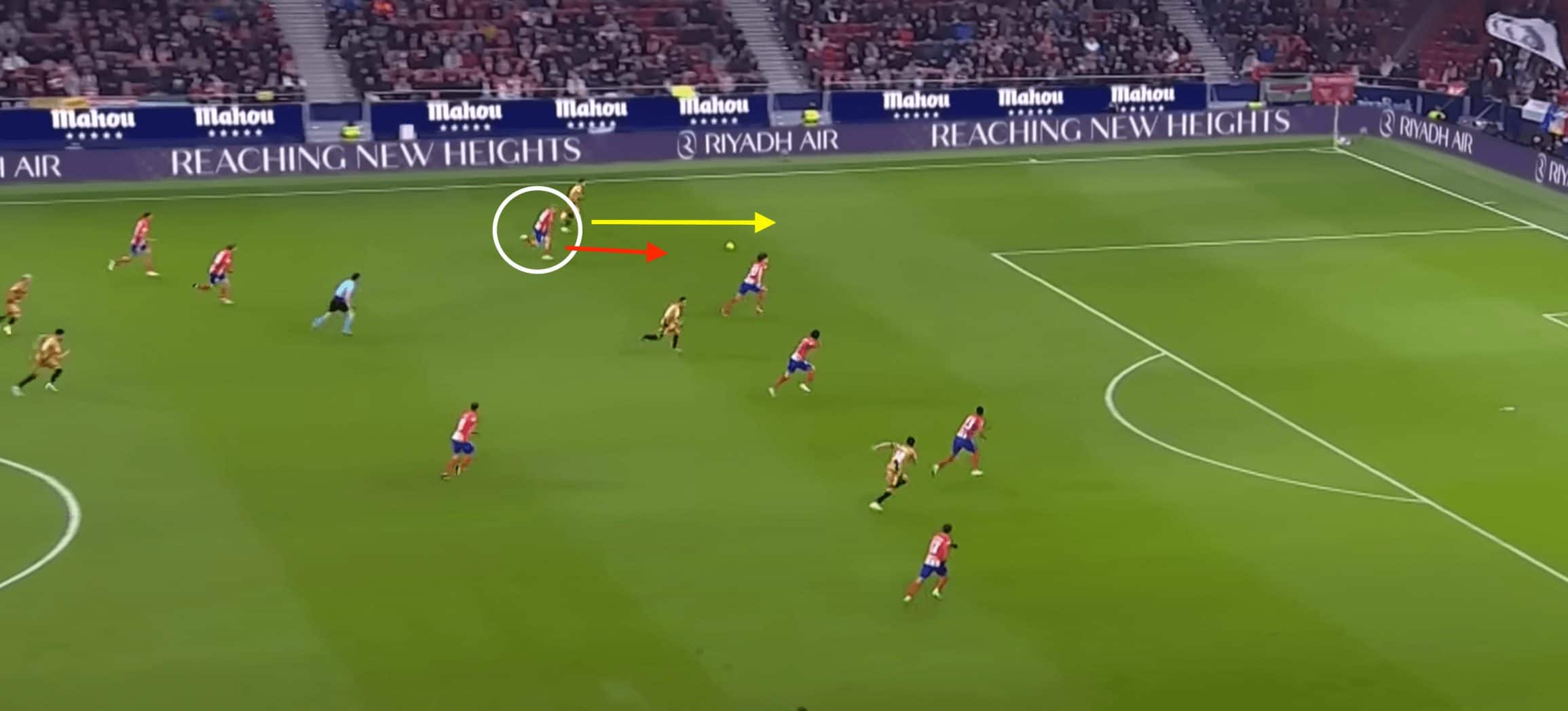
Despite the recognised leap from the Belgian Pro League to La Liga, his manager made reassuring comments regarding his ‘important future and personality’.
Once Vermeeren can adapt and fully understand his new Atléti system, we are sure he can be a force in European football for years to come.
Johnny Cardoso Scouting Report
Another midfield starlet looking to make waves in the second half of this La Liga season would be Real Betis’ Johnny Cardoso.
Having made the switch from Brazilian outfit Internacional for around €6 million, he has been coined by many as ‘Johnny Soccer’, with clear intent on elevating his game to get on the plane for Copa America 2024.
With the USMNT unsure about the fitness and availability of captain Tyler Adams, Cardoso represents a youthful and energetic alternative for head coach Gregg Berhalter at just 22 years of age.
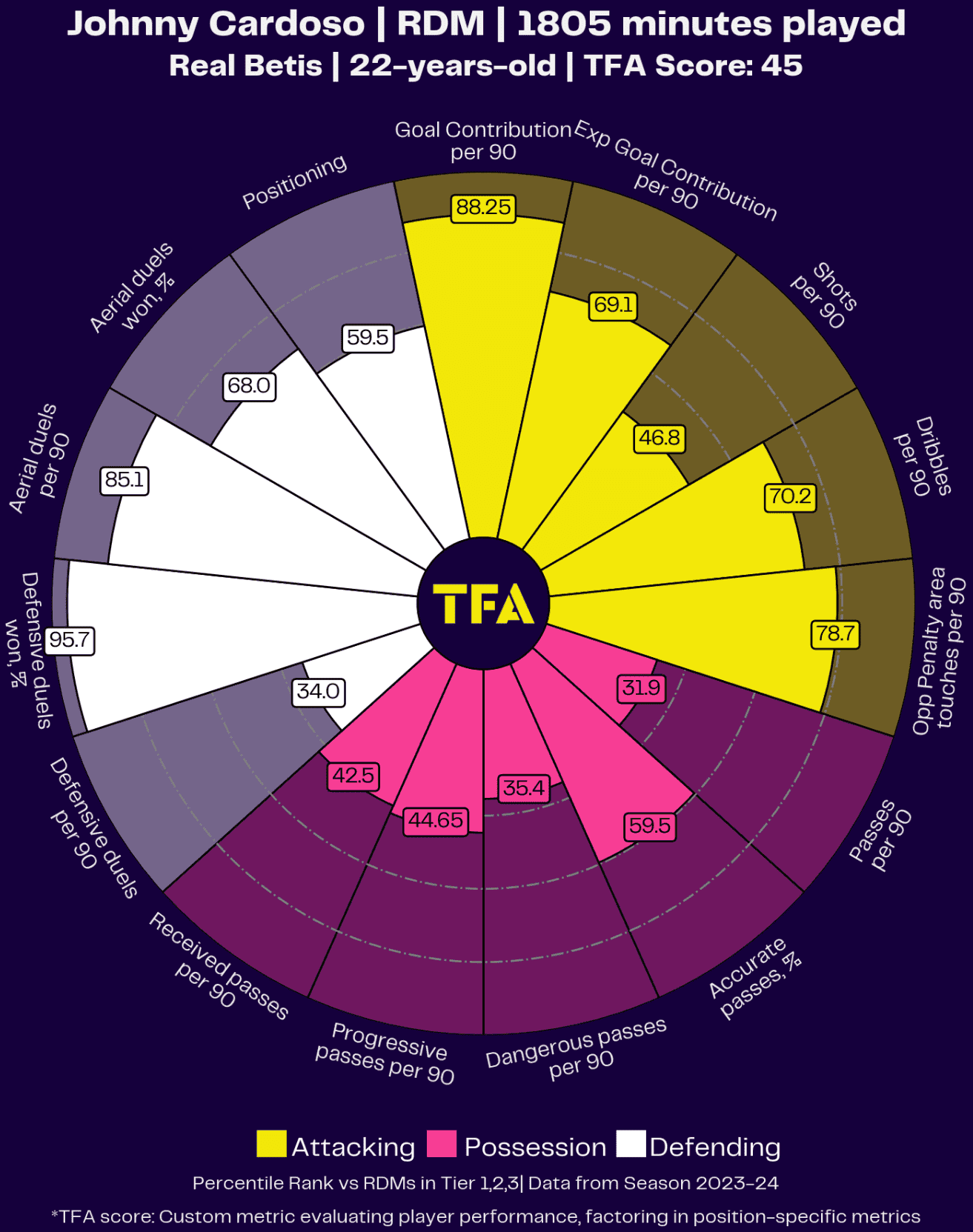
Cardoso’s strengths lie within his incredible defensive contributions for club and country, with excellent tackling and mobility at the base of the midfield.
He can be seen as the anchor in front of the defensive line, mopping up loose balls and displaying his ball-winning intelligence through duels and tackles.
It can be highlighted that he remains more comfortable within a double pivot, with new manager Manuel Pellegrini already showcasing a new pairing between himself and Marc Roca.
Cardoso has had the freedom to utilise his energetic play, surging forward to press in the early phase of opposition build-up, to then retreat and offer defensive solidity in the middle and final thirds.
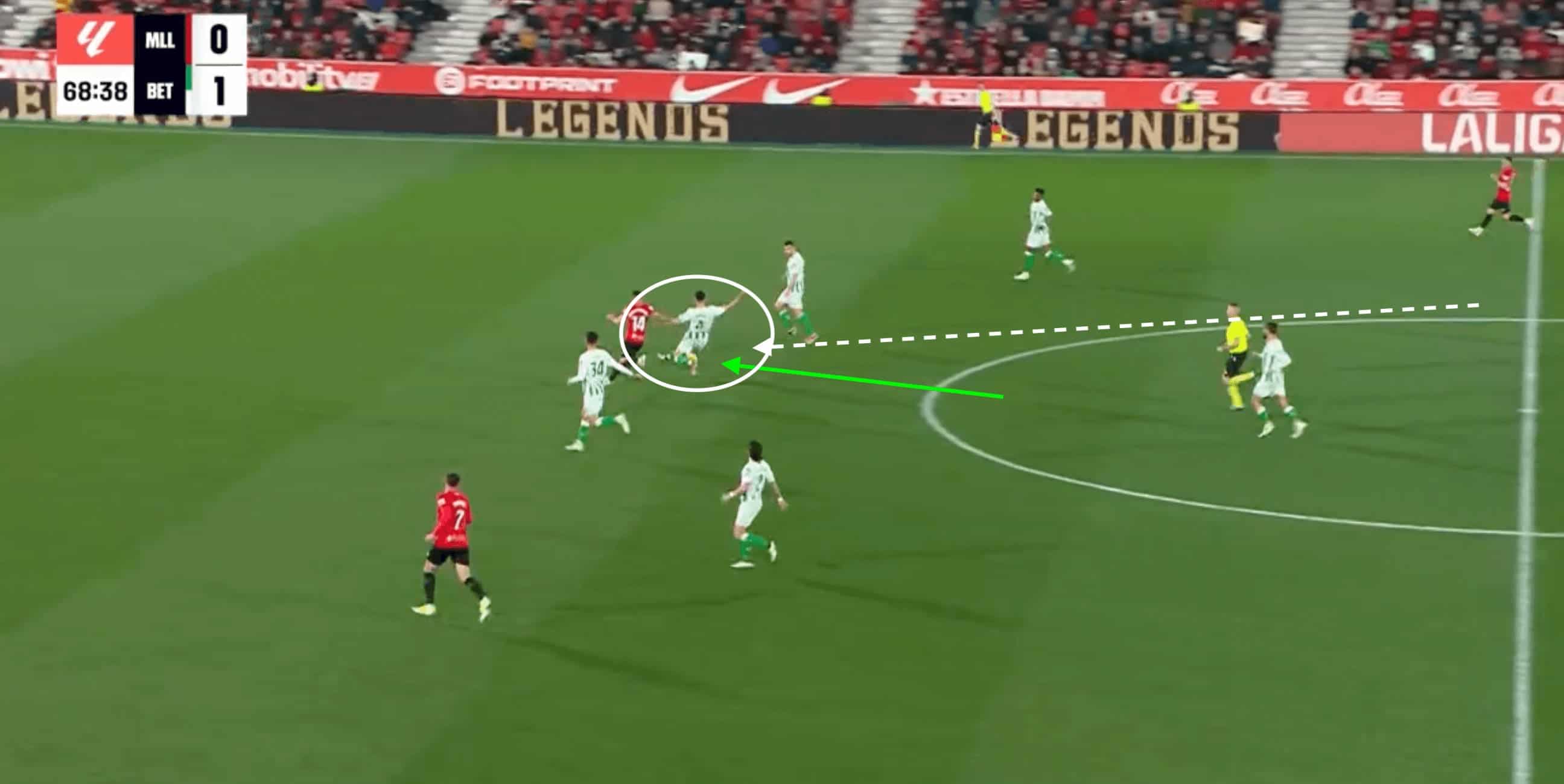
When in possession, Johnny Cardoso has grown to epitomise ‘La Pausa’ with his comfortability on the ball.
He possesses the natural ability to slow down the pace of play before driving forward to anticipate key passing lanes and opposing pressors.
His ability to break the lines and distribute creates a perfect harmony with Betis’ Isco, with the dangerous playmaker often dropping deeper to collect the ball and work his magic.
Having impressed already in matches against Barcelona and Mallorca, fans of Los Verdiblancos will hope their growing star can reignite a push for European qualification.
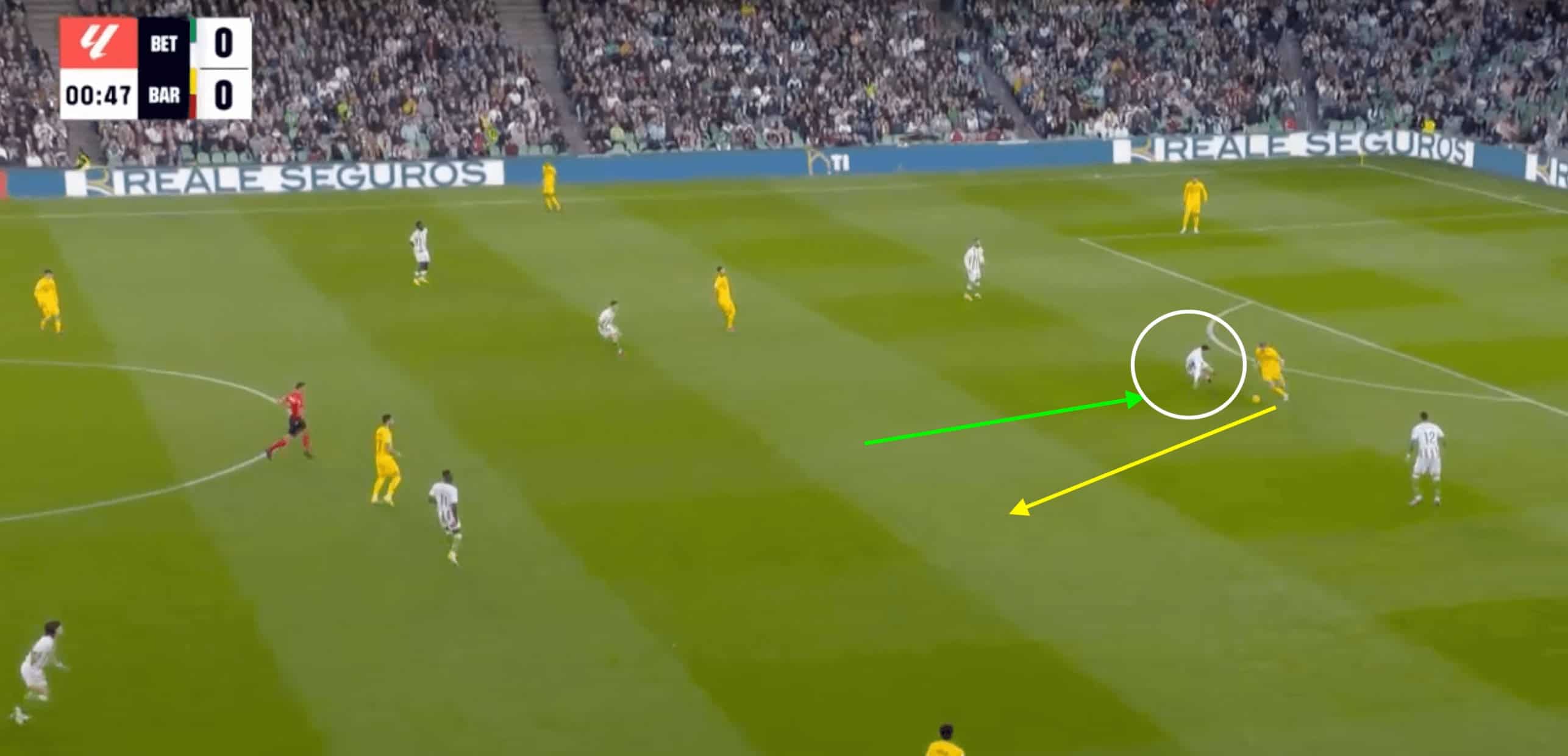
Yerson Mosquera Scouting Report
Yerson Mosquera has been granted another excellent opportunity to showcase his defensive talents with the view of reintegrating into Gary O’Neill’s Wolves side for years to come.
After an excellent campaign in the United States with FC Cincinnati, the 6’2” 22 y/o Colombian central defender has joined Villarreal on a loan deal to achieve regular first-team football against some of the most talented attackers in world football.
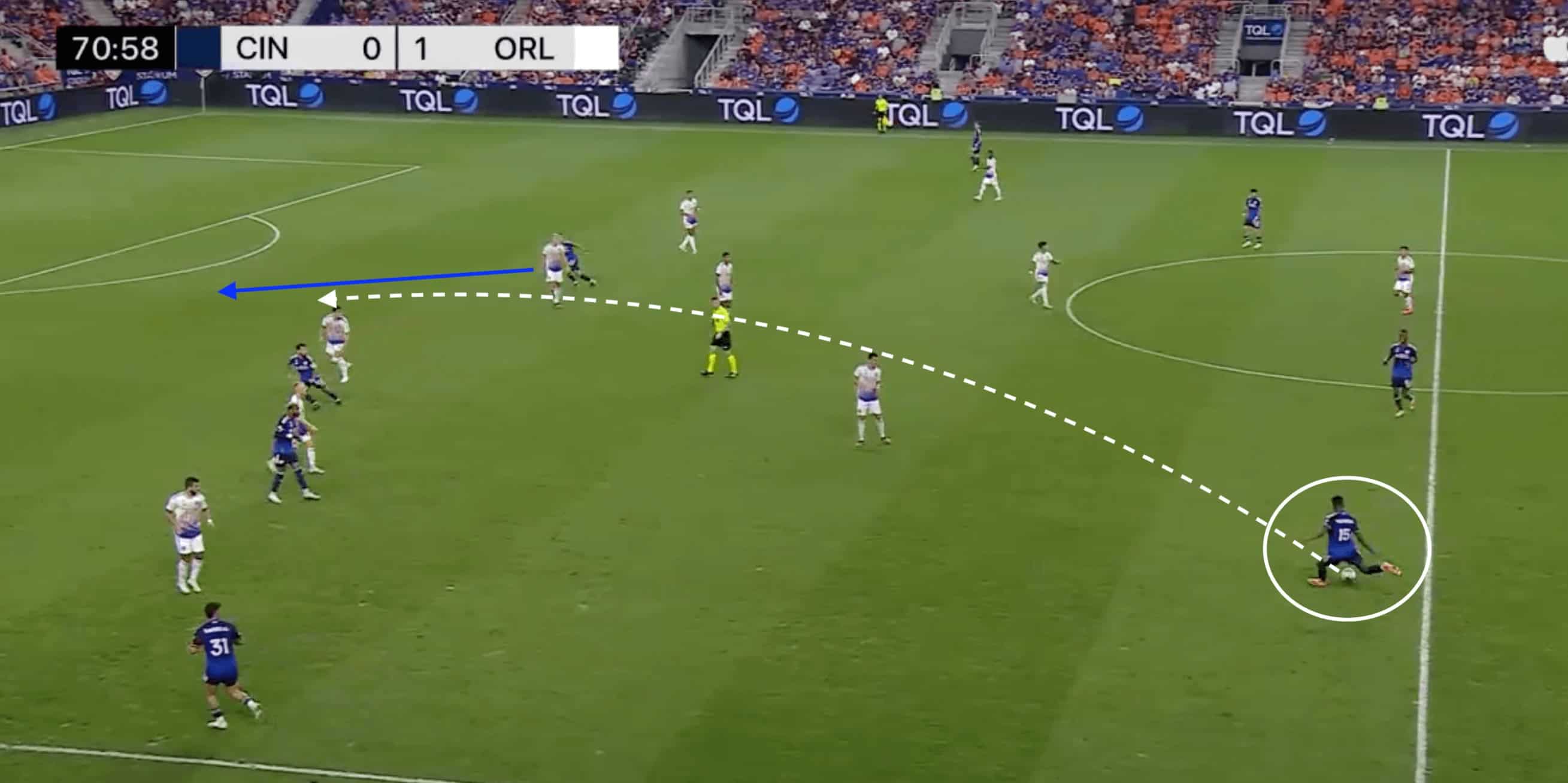
Mosquera embodies all the necessary talents of a modern-day central defender, exhibiting key defensive contributions whilst being useful in the attacking build-up.
An interesting development would be his versatility across the back line, also showing proficiency playing as a right-sided full-back.
His natural speed and physical presence were perfect in FC Cincinnati’s back three, allowing him the freedom to chase through balls in the channels, breaking shape to nullify runners in behind before they posed too much of a threat.
Mosquera’s large frame naturally makes him a force to be reckoned with vertically, having won 3.40 aerial duels per 90 in the MLS last season.
Once regaining possession, he works well to evade the press and is content with carrying the ball forward or finding the progressive pass into the middle or final third.
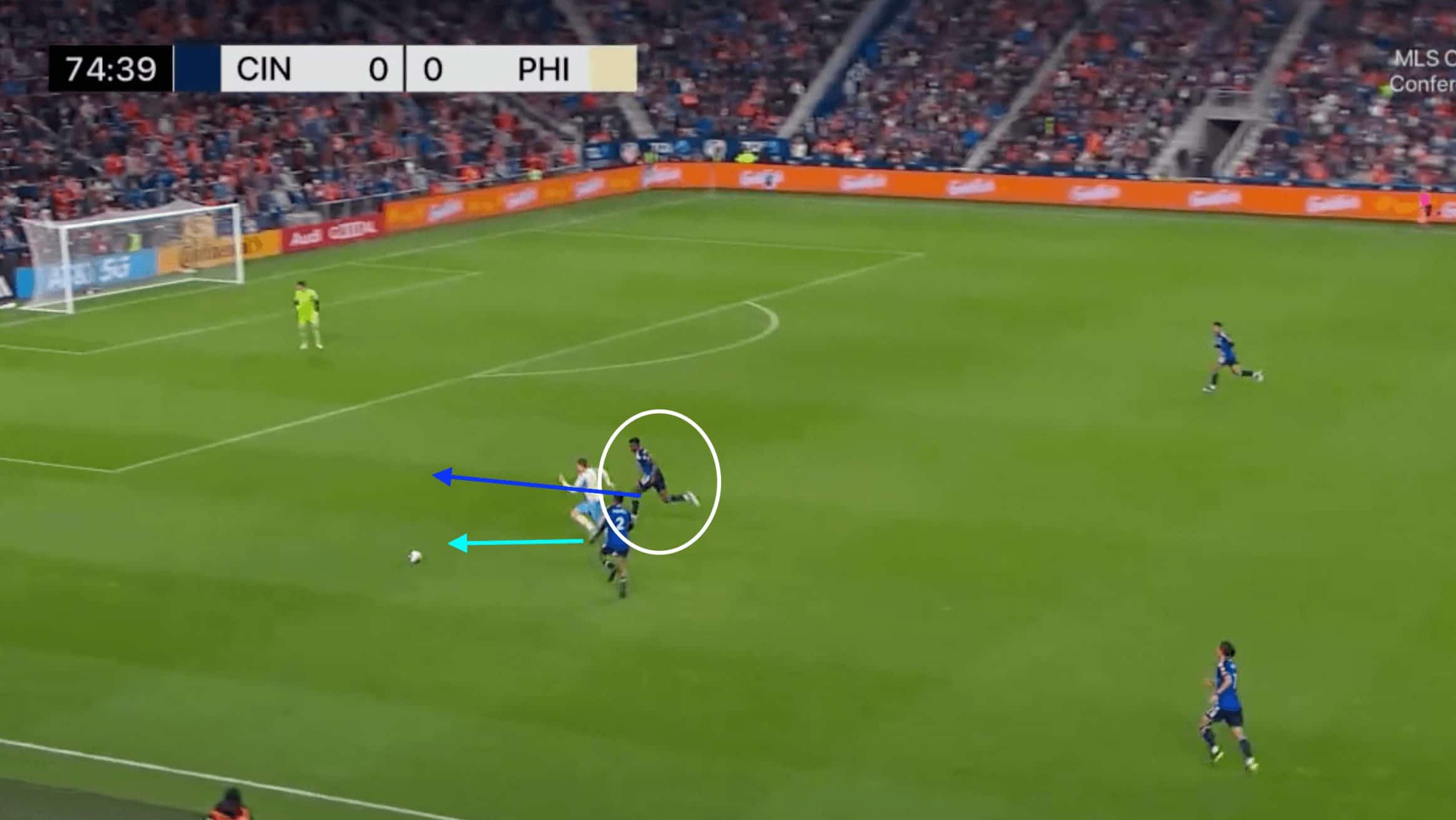

It can be stated that Mosquera sometimes from being over-eager in the defensive phase, stepping up to duel and leaving space for runners in behind.
Especially within the traditional four that operate within the Villarreal defensive line, Mosquera will not be afforded the comfort of an extra defender- making such decisions even more detrimental.
Conclusion
Whilst these additions have been signed for their respective clubs for a multitude of different reasons, they all embody the same vibrant flair.
At this crucial stage of the season, only time will tell as to how they settle within their new systems and contribute to the overall success of the team.
But one thing is sure: these players are on the rise and ready to demonstrate their ability on Spanish football’s greatest stage.

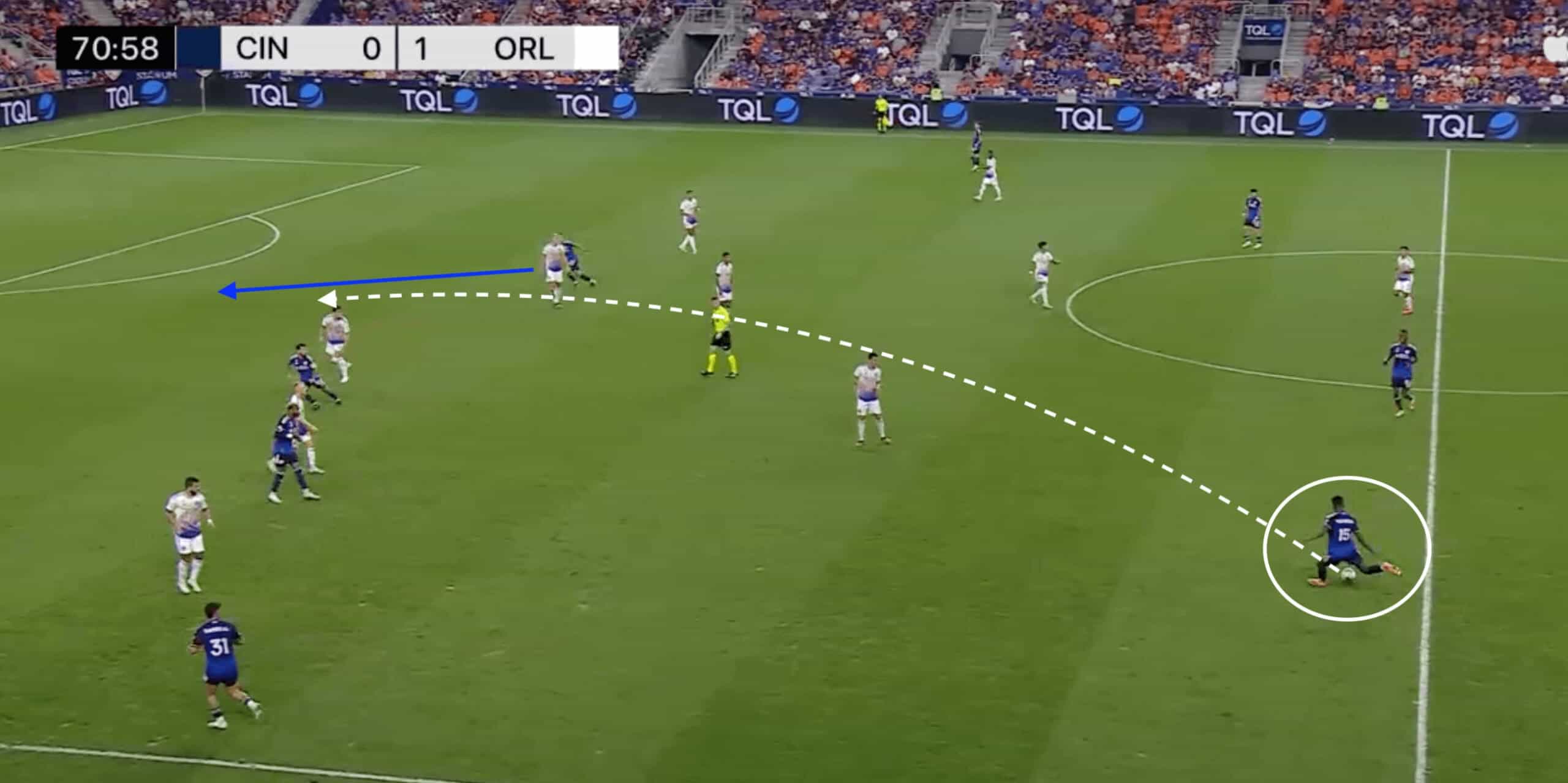



Comments